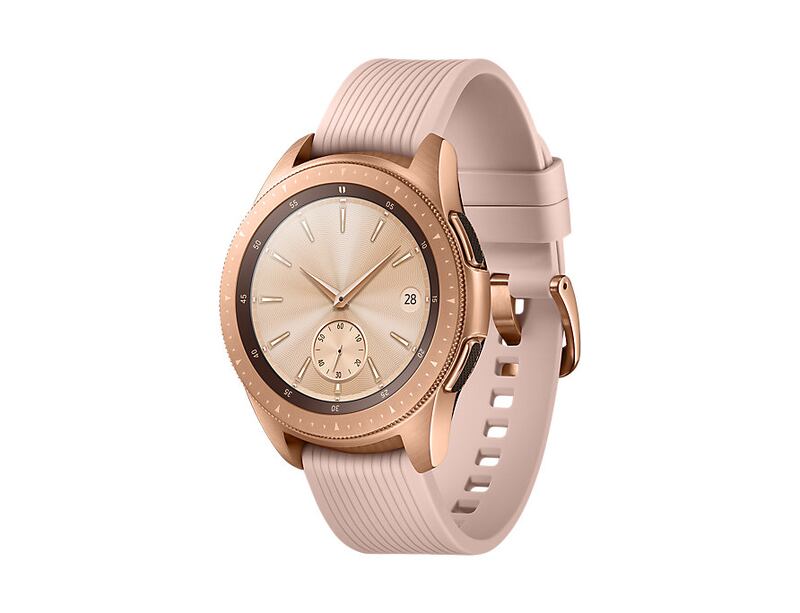Samsung has been doing wearables for a while. It was pumping out smartwatches when people were still speculating about the existence of the Apple Watch, and pushed through the debate about whether the general public even wanted the devices.
If the Galaxy Watch is any indicator, the company made a good bet. The evolution from the first Galaxy Gear in 2013 to the newly released Samsung Galaxy Watch is significant. Lookswise, the watch has made dramatic improvements. It’s a little chunkier than the average watch but unless you are really examining it, it passes for a normal timepiece. The rose gold version is particularly eye catching. It looks similar to the Moto 360 2, but is a full round screen instead of having the bands top and bottom that square things off.
On the back is a heart-rate sensor, which will determine your resting heart rate and keep an eye on your progress during exercise. The watch will also measure your stress levels and track your sleep. It’s all displayed on a crisp Amoled 1.2-inch screen, if you’re wearing the 42mm version.
If you have big fingers, this is where you might run into problems with smartwatches. Part of the usability issue has always been the small screen. Various wearables have different ways of getting around this; the Apple Watch has the digital crown to navigate through apps, and the Samsung Galaxy Watch has a rotating bezel. Combined with the buttons on the side of the device, it makes it easy to cycle through the various screens, select apps and scroll through menus. That rotating bezel is one of the reasons why Samsung has gone with its own operating system Tizen rather than Android Wear. Without it, the Galaxy Watch would be frustrating to use. As it is, you zip through menus and get to what you need with minimal fuss.

You can help this out by setting your favourite apps and, if you want to track your exercise, setting favourite exercises from a predefined list.
The Galaxy Watch does well on another issue with wearables: battery life. Poor battery life is a contributing factor in many wearables being banished to a drawer and never heard from again. While Fitbit has routinely developed devices with a battery life of several days, other wearables have fallen far short of this. The Galaxy Watch battery life is decent; you won’t have to charge this one every day. I inadvertently tested it on a recent work trip by leaving the charger in a different timezone. With normal use, the battery is supposed to last three days on this particular version; the powersaving mode came in handy, eking the power out for four.
The galaxy Watch obviously will work best with other Samsung devices, but it also plays nicely with other Android smartphones. I tested the watch with a Huawei Mate 20 Pro. The Samsung Gear app can be downloaded from the Play Store to compatible Android phones, and setting it up is painless.
The watch can be used in standalone mode, but its functions are limited. For third-party fitness trackers, such as MapMyRun or Endomondo, you'll need your phone to hand. There is an LTE version of the watch, but it's not available in Ireland – yet.
The good
The Galaxy Watch ticks all the right boxes, from looks to functionality. It blends with the standard watches but stands out among its smart brethren. It’s easy to navigate and has enough features to make it a good all-rounder for both general smartwatch functions and fitness tracking. Battery life is good enough that you can almost forget about it.
The not so good
Proprietary chargers are the worst, regardless of what company is behind it. Forget – or, worse, lose – your charger and you're stuck. Also, Samsung's digital assistant could still use some work. In a world where Alexa is taking over, Bixby still needs improvement. A few more third-party apps would be nice too.
The rest
The watch will work best with Samsung products but performs well with other Android devices. It also has some third-party support, with widgets for Endomondo, MapMyRun and FitnessPal among the available customisations for the watch. However, you need the app installed on your phone too, which tethers you somewhat.
The verdict
If you are an Android user, this is the everyday smartwatch you need.













